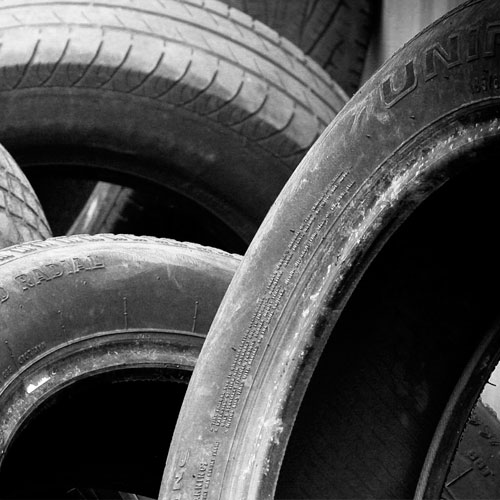Special use synthetic rubbers

Synthetic rubbers are artificial elastomers (not natural) that are used in applications that require special processing.
The fundamental difference between both types is that EPM is an ethylene-propylene copolymer, that’s why its bond is saturated and it can only be vulcanise with peroxides. The EPDM contains a diene in its structure which allows it to be vulcanised bysulphur. The great advantages of these rubbers are:
- Excellent ageing resistance, both room temperature and high temperature
- Excellent ozone and rust resistance, it does not need the use of anti-rust nor antiozonant products
- Excellent resistance to water-steam, alkalis, acids, and normally all non hydrocarbon chemical compounds
- Exceptionally low density
These rubbers can also show some disadvantages, for example:
- Low oil resistance
- They have medium mechanical features.
Chloroprene rubber is the most balanced in terms of properties:
- Good mechanical features even with low loads level, as is the case with natural rubber
- Good resilience from 60º Shore A on
- Medium hydrocarbons resistance
- Good oxygen and ozone resistance
- It is self-extinguishing / fire resistant: it burns if we apply a flame on it, but it goes out when the flame is moved away
Concerning the factors against it, we must point out its great power “it can be used for everything, but there is a better rubber for everything”
Normally we have to say that Nitrile Rubbers stand out because they show:
- Exceptionally good resistance to aliphatic hydrocarbons
- Exceptionally good resistance to fatty acids and animal and vegetable fats
- Good resistance to solutions diluted in salts, acids and non-oxidant alkalis
- Low permeability to gases / fumes
- Good tensile, tear and abrasion strength
- Good heat resistance
AAmong the cons, we can point out:
- Low resistance to aromatic hydrocarbons (toluene, xylene, etc.)
- Low resistance to chlorinated hydrocarbons (trichloroethylene)
- Low resilience
- Poor resistance to low temperature
Modified Nitrile Rubbers (HNBR)
Hydrogenated Nitrile rubber is, as its name suggets, a nitrile rubber whose main double-link bonds have been catalytically hydrogenated, making it completely saturated. Therefore, the only way this rubber can be vulcanised is by means of peroxides.
With these modifications to nitrile rubber, the original rubber properties can't be modified, as the branches of the main bond do not become affected, but some of the properties which limited its use are improved, such as:
- Excellent oxygen and ozone resistance
- Better low temperature resistance
Ethylene-Acrylates-Acrylic Acid (VAMAC®)
The most outstanding property of this type of rubber is the wide spectrum of temperatures where it keeps its elastic properties, only exceeded by Silicone Rubbers. The performance temperature range of this rubber can go from -60ºC to 150º C.
Further to the above mentioned, this rubber shows the following properties:
- Excellent resistance to elements and ozone
- Good high temperatures compression set
- Mechanical properties medium values
Their fundamental property is that the main bond does not contain any carbon atom as all the rest of the rubbers do, but it is made up of by alternating silicon and oxygen atoms. This property makes the thermal stability much higher than that of its competitors.
Among the advantages of the Silicone Rubbers use, we can point out:
- A very wide temperatures range, from -100ºC to 200ºC, being able to reach up to 250ºC
- Although the mechanical features are low at room-temperature, they can keep them at high temperature as per their thermal stability, beating those rubbers which show better properties at room-temperature.
- They are resistant to elements and ozone
- They are perfect thermal insulation materials
- They do not burn easily and they are auto-extinguishable
- They have a remarkably low gases/fumes permeability
As per their physiological safety and their tolerance to alive organisms, they are ideal to manufacture products which will be in direct contact with food of medical-pharmaceutical items, etc.
On the negative side we should mention:
- Their low resistance to alkalis and acids, as well as to chlorinated hydrocarbons, esters, ketones and ethers
Fluorocarbon Rubbers (FKM, FFKM)
The great heat and chemical agents' resistance are the main property of this rubber. Besides, fluorocarbon rubbers show:
- Great aliphatic, aromatic and chlorinated hydrocarbons resistance
- Great resistance to water and water-steam and to acids and alkalis
- Great resistance to elements and ozone
- As per its halogen contents it is auto-extinguishable
It does not show many disadvantages, some of them as follows:
- They have the highest density of the all the studied rubbers.
- Low esters and ketones resistance
Other Special Use Synthetic Rubbers
The range of synthetic rubbers existing in the market is wide. These are some of the synthetic rubbers for special uses:
- Poly-Isobutylene Isoprene (butyl) (IIR)
- Butyl Halogenated Rubbers (Chlorobutyl CIIR, Bromobutyl BIIR)
- Polynorbornene (PNR)
- Polyurethane (AU) (EU)
- Polysulphide (TR)
- Chlorosulphonated Polyethylene (CSM)
- Chlorinated Polyethylene (CM)
- Epichlorohydrin Rubbers (CO, ECO)
- Acrylic Rubbers (ACM)
- Ethylene, Vinyl Acetate Rubber (EVA)
Other Materials

Natural Rubber (NR)

